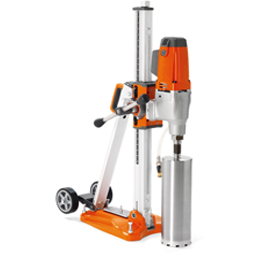Are you ready to obtain the best drilling results for your project? If so, you need to determine what kinds of diamond bits or drills are perfect for the job. This is important since knowing the right tools to use will save you both time and money.
To which category do you belong? Are you a novice, an experienced engineer, hobby enthusiast, researcher, or a contractor? Knowing this will help narrow down your choice to the types of diamond bits that are most appropriate for completing your project.
To ensure that everything goes smoothly, take heed of these three prerequisites to core drilling success:
- Proper detailing
- Suitable preparation
- Following basic techniques
Type of Material
What kind of material are you working with in your core-drilling project? What are its features or characteristics? This will help in determining the tools and techniques you’ll need to obtain the desired outcome.
The kind of material you are planning to drill is an important consideration in your choice of drills:
a) Hardness of Material
For ultra-hard Alumina, Sapphire, natural/precious stones, materials with high metal content and advanced ceramic; metal bonded sintered diamond drills are the best.
For less expensive or softer materials such as tile, soft stones, glass, and composites, nickel bonded electroplated diamond drills work the best.
The basic rule for core drilling is that you will require soft bonds for hard materials, for free and fast drilling. Similarly, abrasive or softer materials require hard bonds for long-lasting performance.
b) Cost of Material
What kind of material are you going to drill? Determine how expensive it is. For expensive or precious material, the cost of the bit or drill matters little.
The use of a diamond thin wall core drill will help minimize deformation and loss of material. Having an estimate related to per-hole quality and target cost surely helps.
c) Density & Geometry of Material
Each type of material has a specific composition, density, and hardness. A method or technique that works for one, may not work for the other.
If you are looking for optimal, consider custom diamond drills that suit perfectly the type of material you’re planning to drill.
Material properties such as brittleness, size, shape, hardness, and diameter, will help in your choice of bits, clamping methods, feeds, speeds, and drilling equipment.
d) Thickness of Material
The thickness of the material you’re drilling determines how much pressure and coolant to use.
Multiple direction coolant works the best with through the drill, coolant submerged drill, and from the sides. This ensures enough lubrication and coolant will reach the drilling zone.
Running the coolant at high pressure through the diamond bit/drill centre using a swivel water adapter is ideal for drilling a material thicker than 1 inch or 25.4 mm. With, long-depth drilling you will require a stepwise mechanism using multiple bits or drills.

